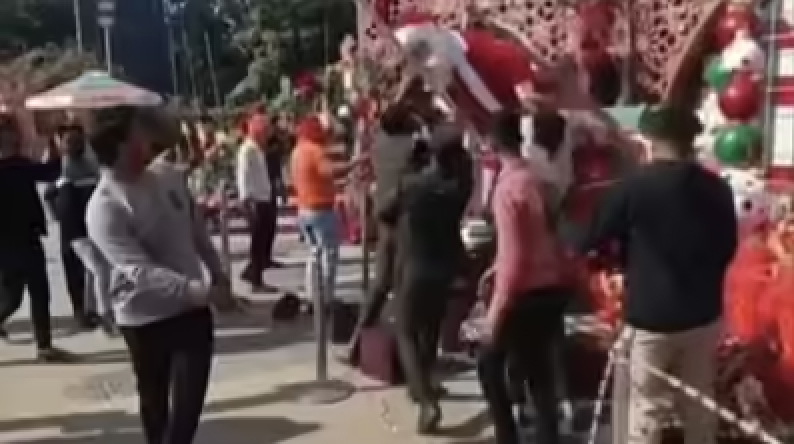
At a recent rally celebrating India’s Independence Day on August 15 in New Jersey, a bulldozer bearing images of the far-right Hindu monk Yogi Adityanath and the Indian Prime Minister Modi roamed the streets with Hindu nationalist slogans chanted in the background. Under Adityanath, who is currently the chief minister of India’s most populous state and a political stronghold in the country, Uttar Pradesh, instances of police brutality (popularly known as “encounter killings”) against Muslims and Dalits (so-called untouchables) have raised alarm among several transnational human rights organizations. Speaking about Muslim women protesting against discriminatory legislation in 2020, Adityanath asked his followers to “feed them bullets, not biryani” (traditional North Indian Muslim cuisine). Today many Hindu nationalists view Adityanath as an able politician who might eventually replace Indian Prime Minister Modi to head the Hindu nationalist Bharatiya Janata Party (BJP). In Uttar Pradesh nowadays, the bulldozer has become a potent instrument for demolishing Muslim homes when they protest against violence, humiliation, and discrimination. For Hindu nationalists, it has clearly become a celebratory symbol within and outside India.
While 9/11 has etched the figure of the Muslim terrorist in the Western imagination, the phenomenon of Hindu terrorism has received little scrutiny. In a strategic move to politically cement their power at the global stage, Hindu nationalist actors in both India and the Western diaspora have not only appropriated Islamophobic discourses of the “War on Terror” but actively thrived through it to wantonly mark disposable Muslim bodies for death, rape, violence, and statelessness through their support for an Indian state that enacts these brutalities as an active component of its Hindu nationalist/Hindutva ideology. Older histories have proved to be fertile grounds for the ongoing persecution of Muslims in India, following the colonial legacy of British institutional efforts to cause a schism between Hindus and Muslims, racializing Muslims as more masculine and violent than subservient and effeminate Hindus, and distorted school history textbooks that presented Muslims as medieval foreign invaders to the country. Today Muslims are problematically and singularly blamed for the Partition of India in 1947.
This anti-Muslim animus in postcolonial India gained further momentum under the country’s unique trajectory of Brahmin supremacist racializing, gendering, and demonizing of Muslims and Dalits through casteist lenses of desirability and belonging, propagated through popular mediums such as Bollywood movies, demographic myths, and, as some scholars have argued, the structures of liberal representative democracy itself. Importantly, Hindu privilege as a majority in India and Hindus as model minorities in the West, rather than being a monopoly of the Hindu right, is baked into Western liberalism. This is not to deny the century-old exceptionally violent project of Hindutva heralded by Savarkar and Moonje since the 1920s or the links between Nazism and the Rashtriya Swayam Sevak (RSS), or the fact that several Hindu nationalists were troublingly also members of the Congress Party prior to the Partition of 1947. Nor is it to downplay the racism that Hindus face in the West. However, scholars must reconsider how majority-minority dialectics are structurally implicit in representative liberal democracies and how these representations draw on national and international discourses.
This story was originally published in tif.ssrc.org . Read the full story here






